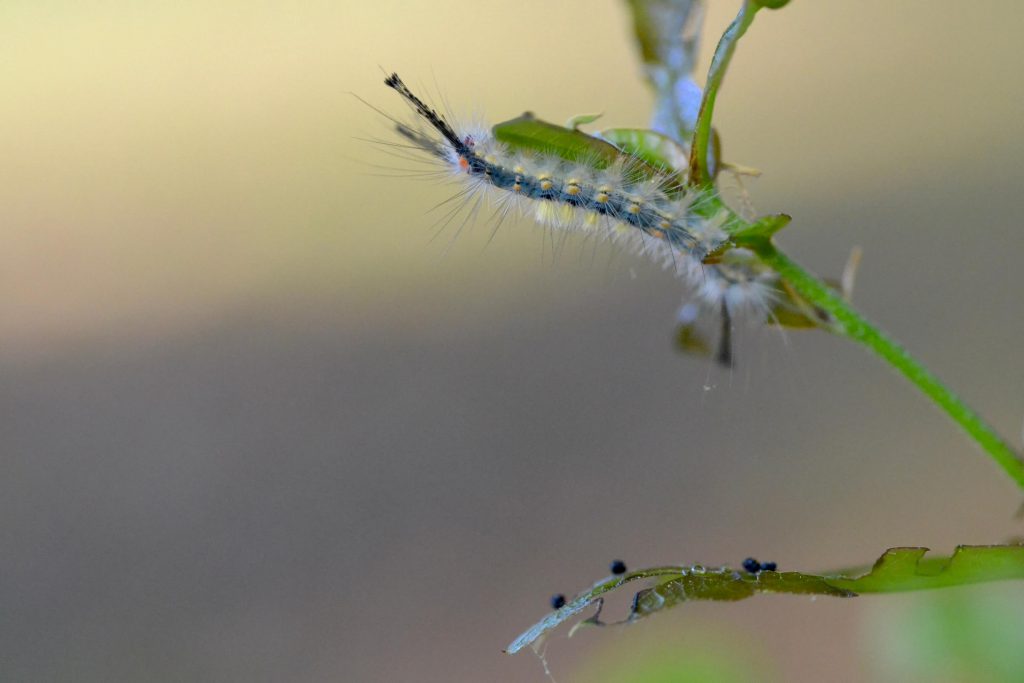Throughout early spring, leaf buds on deciduous trees open up into fresh, green leaves. Our recently bare and bland landscapes are green again. We aren’t the only ones who are excited about this, though. Leaf-eating insects are too. Early spring is when many herbivorous insects like caterpillars and beetles eat their hearts (more like their dorsal vessels) out. This is because those new leaves out there are more nutritious and easier to chew and digest than their aged counterparts.
New leaves are more nutritious. Nitrogen is a limiting nutrient for insects, which means the more they can get, the better off they are. Nitrogen content in leaves follows seasonal cycles, peaking in early spring and late fall. Many insects have synchronized their life cycles and feeding behavior to match nutrient cycles in plants. That way, they get the most out of what they eat.
New leaves are easier to chew and digest. Younger leaves are not as thick, have less cellulose and lignin (building blocks of plant tissue), and are generally not as tough as mature leaves. For chewing insects like caterpillars and beetles, tough leaves mean less eating, slower development, and more wear and tear on those mouthparts. Like cutting hair with dull scissors. Not only are new leaves less physically challenging, but they also contain fewer defensive compounds like tannins and resins. When insects eat tannins, they aren’t able to break them down and digest the leaf material. Oaks are a great example of a tree that produces high concentrations of tannins in their leaves.

Many insects have evolved adaptations to overcome these common plant defenses, but these spring insects choose one of the simplest ways to succeed: avoidance. Take a walk around your home this spring and see if there are signs of herbivore feeding on the newly expanded leaves. Many times you’ll find half-eaten leaves but you can’t find an insect anywhere. This is when your investigator skills come in handy.
You can figure out what is eating your leaves by looking for evidence of the pest. For example, caterpillars often leave a trail of frass (their poo) behind on leaf surfaces. In the photo below, you can see a few fras droppings beneath this tussock moth caterpillar that was feeding on my oak tree.

If there are no droppings to be seen, perhaps the culprit is a leaf-feeding beetle. Last night I was walking through my back yard and found several leaf beetles eating leaves on an oak tree (image below). When I went out there this morning they were nowhere to be found. If you have mysterious herbivory, go out at night with a flashlight and take a look.

Most often, these caterpillars and beetles are present in low enough numbers that they don’t warrant any kind of control measure. Trees are extremely resilient and usually produce another set of leaves if their first set are eaten. However, if these insects completely defoliate trees year after year, it will take its toll.
Go outside and see what diversity of insects are getting to work on your landscape plants. Who knows, you may see something you have never seen before. I did today. Then, take a walk around your yard in a few months and see if the dark green, older oak leaves are getting eaten as much. I bet not.
 1
1
